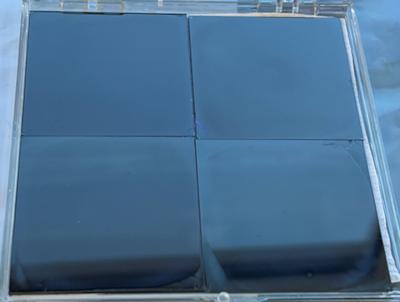Researchers simplify the process of manufacturing perovskite solar cells by coating multiple layers at once
Researchers at the National Renewable Energy Laboratory (NREL), City University of Hong Kong, École Polytechnique Fédérale de Lausanne (EPFL), University of Kentucky, University of Colorado, University of Toledo and Brown University have developed a concept that simplifies the process of manufacturing perovskite solar cells, which could accelerate their path toward commercialization.
Perovskite solar cells are made by sequentially depositing various layers onto a conductive glass substrate, requiring multiple coatings to create the necessary full device structure. The new technique eliminates or combines some of those steps, thereby simplifying the manufacturing process, which could lead to lower manufacturing costs.








